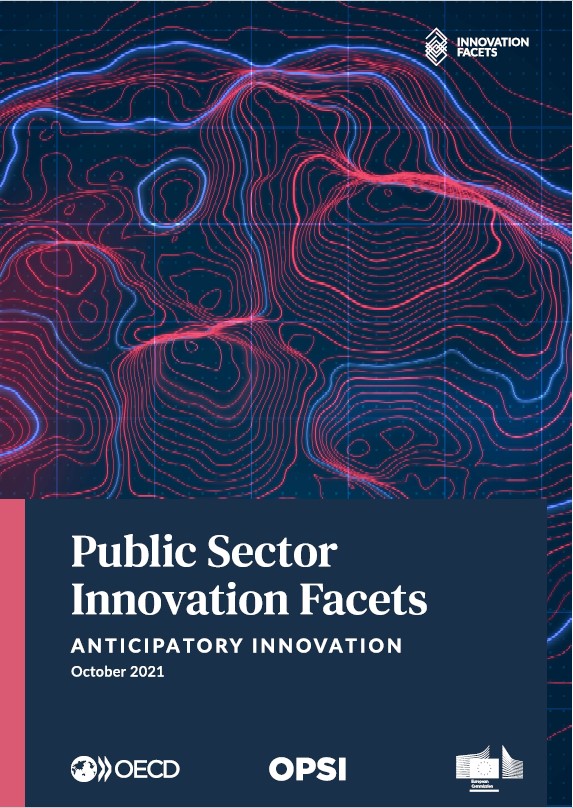Understanding public sector innovation: Launching innovation briefs on OPSI’s Public Sector Innovation Facets

“What is innovation, anyway?” It is a question we are asked at the OECD Observatory of Public Sector Innovation (OPSI) every day. The concept of innovation is varied and confusing. Intentionally managing and steering innovation in governments even more so. While the OECD’s public sector innovation definition outlines that innovation is something that is novel to the context, implemented and brings about impact (for example in the form of change in public value), the world of innovation is much more complex. There are both exploratory and exploitative innovations, those that are more radical in nature versus others that build on the ongoing bricolage of change.
Over the last few years, we set out on a journey to clarify the strategic intent behind innovation and built the Public Sector Innovation Facets model which helps governments better understand and manage multi-faceted innovation. Based on our learnings from public sector organisations around the world over many years, we are pleased to announce that last week during the Government Beyond Recovery conference we launched five innovation briefs based on the innovation facets model under European Commission’s H2020 programme.
What is the Public Sector Innovation Facets model?
The Public Sector Innovation Facets model provides a straightforward way to consider what innovative approaches and instruments governments can use to respond to emerging challenges in a timely manner. It highlights that innovation is a strategic issue in government and outlines the purpose behind innovation be it enhancing current practices, preparing for future risks, tackling our century’s greatest mission or adapting to citizens needs on the ground. The model, thus, investigates questions such as: What types of public sector innovation exist? How are innovative ideas generated in the public sector and are different approaches needed to steer diverse types of innovation? Which methods are used to support investment in innovative projects? What capacity and resources are required for public sector innovation?
The four innovation facets and how to link it all through portfolios
OPSI’s facets model identifies four innovation “facets” which can be used to explore the purpose and intent of innovation activities as well as how they work in practice. These include: mission-oriented innovation, anticipatory innovation, adaptive innovation and enhancement-oriented innovation. The corresponding Public Sector Innovation Facets briefs are the fruit of research and collecting experiences from public servants across the world. Each innovation brief explores the main drivers and enabling conditions that drive different types of innovation, and the tools and capacities that are needed to manage it. More extensive versions of the innovation briefs, including detailed discussion and case studies will appear in a forthcoming OECD report.
Anticipatory Innovation
Governments opt for anticipatory innovation when there is a high degree of uncertainty about how trends might evolve. Anticipatory innovation explores and engages with emergent issues that might shape future priorities and future commitments (e.g., conducting experiments to explore the future of work). An example of anticipatory innovation is the use of a sandbox to explore the impact of Artificial Intelligence on service delivery in health.
Main takeaways from the innovation brief:
- Governments require future-oriented innovations in order to respond to complex challenges, such as climate change, aging societies and digital transformation, in real time.
- The emerging field of anticipatory innovation expands the frontier of less action-oriented disciplines such as futures thinking and strategic foresight. Its purpose is to make futures knowledge actionable by implementing real innovations based on empirical experimentation.
- The necessary conditions for facilitating anticipatory innovation in the public sector are strong foresight ecosystems closely connected to innovation governance structures, and working methods that embed anticipatory innovation in day-to-day processes.
You can read more about our recent facets workshop here and read up on our work on anticipatory innovation here. If you missed our event on anticipatory innovation at the Government Beyond Recovery conference, you can watch it here.
Enhancement-oriented Innovation
Enhancement-oriented innovation means improving how things are currently done. It achieves efficiencies and better results and builds on existing structures. Governments use this type of innovation when they digitise services or need to do more with less. An example of this type of innovation is the use of behavioural insights to improve the compliance rate with one-time payments.
Main takeaways from the innovation brief:
- Enhancement-oriented innovation is driven by public sector constraints on resources and costs, the influential principles of New Public Management – a market-driven public administration paradigm, and by digitalisation and the adoption of new technologies.
- There are numerous enabling conditions for enhancement-oriented innovation, including continuous evaluation, auditing and performance measurement systems. Developing digital skills within public sector organisations, as well as the adoption of new digital or funding infrastructures, can also sustain enhancement-oriented innovation in the public sector.
- Governments have adopted tools and methodologies to stimulate and manage enhancement-oriented innovation – such as lean and six sigma methodologies, project management and quality improvement methods etc. – but it should be made clear that these widespread approaches do not crowd out other types of innovation.
Hear more about how governments from Austria to Australia do this in practice here and watch a panel discussion at our recent conference here.
Adaptive Innovation
Adaptive innovation tries new approaches in response to a shifting operating environment, such as crises or changing citizen expectations. Adaptive innovation relies on partnerships, experimentation, and feedback mechanisms. Governments co-designing new community responses to emerging challenges such as the COVID-19 pandemic is an instance of adaptive innovation.
Main takeaways from the innovation brief:
- Three dimensions of adaptive innovation are relevant for governments: a readiness to respond to change, the ability to innovate at a fast pace, and a governance framework that allows adaptation and innovation to take place.
- Environmental, organisational and individual drivers lead to the adoption of adaptive innovation in government.
- To sustain adaptive innovation in the public sector over the long term, there is a need for adaptive organisational structures, decentralised governance structures, enabling infrastructure, networks and partnerships, space for experimentation, and evaluation and feedback mechanisms.
You can read more about how the government of Portugal is using adaptive innovation here.
Mission-oriented Innovation
Short-term, single stakeholder approaches are not sufficient to address global challenges such as climate change or cancer. Mission-oriented innovation provides a collaborative policy model for tackling the grand challenges facing governments today. As an example, setting an objective to dramatically reduce greenhouse emissions within a decade is a mission-oriented approach to innovation.
Main takeaways from the innovation brief:
- Mission-oriented innovation serves the idea that societies should leverage innovation to achieve ambitious goals, coming either from senior government leaders or emerging from bottom-up political processes.
- Governments adopt the practice of mission-oriented innovation to address complexity and achieve systemic shifts. This practice functions as a co-ordination mechanism in response to the failure of traditional policy mechanisms.
- While many factors influence missions, current evidence shows that mission-oriented innovation is often supported by three interlinked policy structures: institutional entrepreneurship and mission governance that enable collaboration and experimentation, available funding for a portfolio of missions, and the adoption of outcome-based procurement.
You can read more about our workshop with organisations adopting mission-oriented innovation in Spain, the Netherlands and the UK here and watch a fascinating conversation on how missions can be future-proofed here.
Innovation Portfolios
Innovation portfolios serve to steer different types of innovation in ecosystems. They avoid projectification, find synergies and help strategic planning of innovation activities. You can read more about how Sweden uses innovation portfolio approaches to align on climate action and hear from portfolio thinkers at Climate KIC and UNDP.
The work on developing the Public Sector Innovation Facets model is ongoing and based on insights from practice in the public sector. These innovation briefs highlight many of the key findings from nearly two years of research conducted under the European Commission’s Horizon 2020 Research and Innovation Programme. They aim at providing actionable expertise and evidence to assist policy makers, practitioners and decision-makers in introducing and supporting diverse innovation activities and practices in their organisations.
A more extensive account of the research behind the innovation facets will be released in early 2022. We thank all the OECD staff and external researchers who have contributed to this work. If you have more questions or feedback about the Public Sector Innovation Facets model, please get in touch with us at [email protected].














